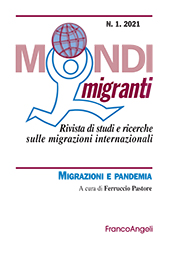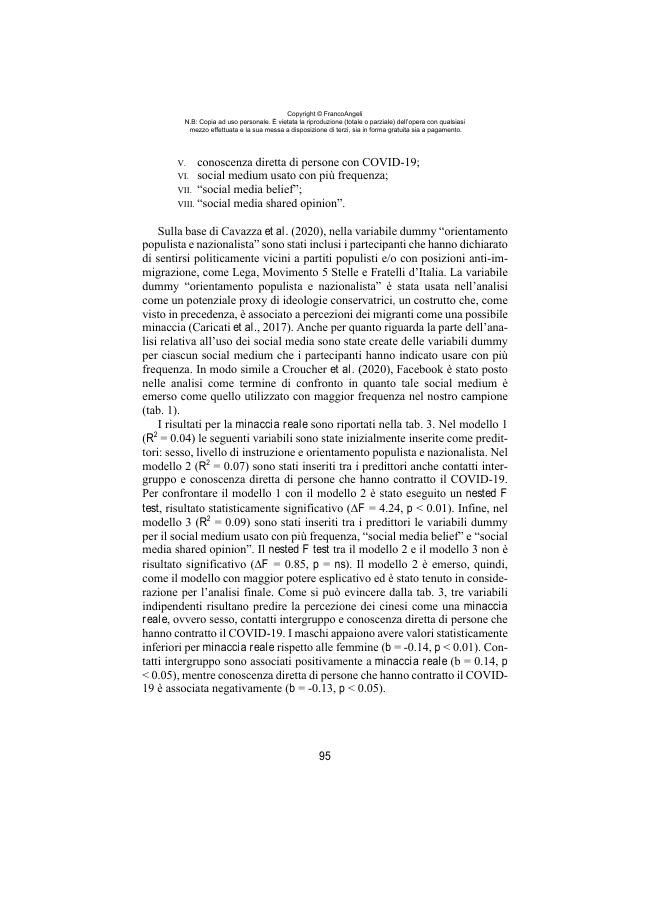La pandemia COVID-19, la sinofobia e il ruolo dei social media in Italia
85-104 p.
Oltre che ad innescare una crisi sanitaria globale, la pandemia COVID19 ha fatto emergere in molti paesi fenomeni di sinofobia. Il presente studio esamina il pregiudizio anticinese in Italia nel contesto della pandemia COVID19 alla luce della teoria integrata della minaccia (Stephan e Stephan, 2000). Tra i fattori considerati nello studio come possibili antecedenti sono stati inclusi il livello di istruzione, le ideologie conservatrici e l'uso dei social media. La raccolta dati è stata effettuata con un sondaggio online che ha coinvolto 316 partecipanti italiani nell'aprile 2020. I risultati suggeriscono come sesso, contatti intergruppo e conoscenza diretta di persone che hanno contratto il COVID19 abbiano contribuito a far emergere la comunità cinese italiana come una possibile minaccia agli occhi dei partecipanti. [Testo dell'editore].
In addition to triggering a worldwide health crisis, the COVID19 pandemic has brought in many countries increased phenomena of Sinophobia. Using integrated threat theory (ITT; Stephan & Stephan, 2000), this study examines antiChinese prejudice in Italy in the context of the COVID19 pandemic. Educational level, conservative ideologies, and social media use have been included in the study among the possible antecedents. The data collection has been conducted with an online survey that involved 316 Italian participants in April 2020. The results showed that sex, intergroup contact, and direct knowledge of people with COVID19 have contributed in bringing about the Chinese community in Italy as a potential threat in the eyes of the study participants. [Publisher's text].
Is part of
Mondi migranti : 1, 2021-
Articles from the same issue (available individually)
-
Information
ISSN: 1972-4896
KEYWORDS
- Teoria integrata della minaccia, pregiudizio, sinofobia, social me-dia, crowdsourcing, regressione gerarchica multipla
- Integrated threat theory, prejudice, sinophobia, social media, crowd-sourcing, hierarchical regression analysis



